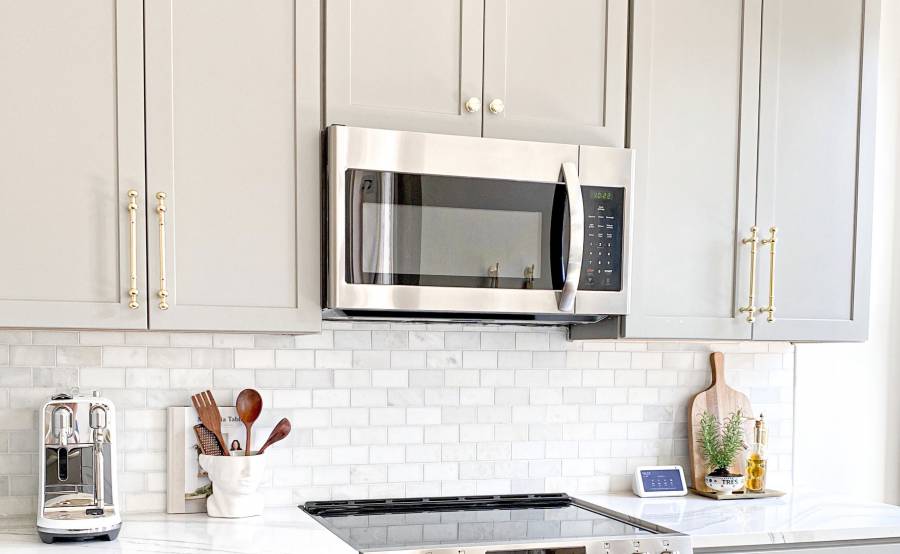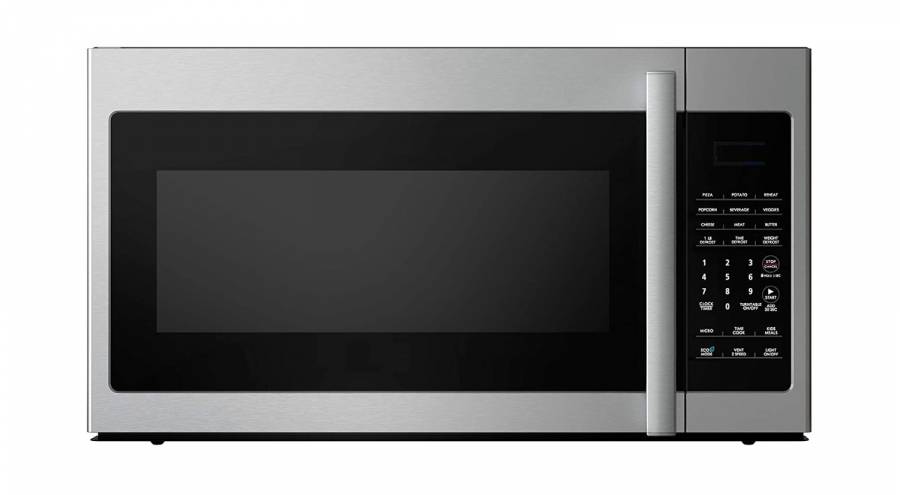Over-the-range microwaves (OTR) offer many benefits to the kitchen. Installation of over-the-range helps save space on the countertop.
It can be installed at different heights to accommodate different users. OTR microwaves also come with a variety of features.
It includes exhaust fans, built-in lighting, and sensors that adjust the cooking time automatically.

Over-the-range, microwaves are a popular choice for many kitchens. They offer a convenient way to save counter space.
However, installing an over-the-range microwave can be tricky.
And it’s essential to follow the instructions carefully to avoid damaging the unit or your home.
Common Problems – Over The Range Microwave Installation
There are a few common problems that over-the-range microwave installation may experience. Here are some of the most frequently reported issues:
Not Level
Over-the-range microwave installation is famous for many homeowners because it saves space and can be installed relatively easily.
However, one common mistake is not leveling the unit before installation. It can cause problems with the door seal, which can lead to leaks.
Make sure to level the unit before installation to avoid these issues.
Use a level to find the highest point of the floor where the over-the-range microwave will be installed.
Then, measure from this point to the bottom of the microwave. The unit should be level with this measurement at all points.
If it is not, make adjustments accordingly.
Once the microwave is level, you can proceed with the installation process.
Wrong Screws
Before you start over with the range microwave installation, it’s essential to make sure you have the correct screws.
The wrong screws can strip the threads or damage the unit. So, it’s essential to get it right the first time.
There are three types of screws that are commonly used for over-the-range microwaves: mounting plate screws, cabinet screws, and support bracket screws.
Mounting plate screws are used to attach the mounting plate to the wall. Cabinet screws are used to attach the microwave to the cabinet.
Support bracket screws are used to secure the support bracket to the wall.
Each type of screw has a specific length and diameter. So, be sure to consult your owner’s manual before starting installation.
With the correct screws, you can be confident that your over-the-range microwave will be securely installed.
Wrong Vent Kit
One of the most common problems is caused by using the wrong vent kit.
The vent kit connects the exhaust fan on the back of the microwave to the ductwork in your home.
And it’s essential to ensure that it’s the right size and style for your microwave model.
Otherwise, you could end up with an exhaust fan that doesn’t work correctly. And one that blows air into your kitchen instead of out of the house.
You may even be able to find a special vent kit that’s designed for your particular model of microwave.
So if you’re having trouble with your over-the-range microwave, check the vent kit before calling a technician.
Chances are, it’s an easy problem to fix yourself.
Cracked Cabinet
If your cabinets are not level, it can stress the over-the-range microwave. And it causes the unit to crack.
The best way to avoid this is to ensure that your cabinets are level before installing the microwave.
You can do this by using a level and adjusting the legs of the cabinets until they are level.
Once the cabinets are level, you can install the microwave according to the manufacturer’s instructions.
If you have an existing microwave that is not installed level, you can try to shim it up. You can use a piece of wood or metal to do it.
However, if the unit is already installed, it is best to leave it as is. And be careful when using it.
Pushing or pulling on the door can stress the unit and cause it to crack.

Damaged Wall
Over-the-range microwaves are famous for homeowners because they free up counter space and can be installed relatively easily.
However, before installing your new microwave, it’s essential to know that wall damage could void the warranty.
When installing the unit, be careful not to use too much force when attaching it to the wall. The microwave should be secured using bolts or screws.
But don’t overtighten them, as this could strip the threads or damage the mounting bracket.
In addition, avoid using nails or staples, as these can cause damage to the wires inside the unit.
Once the microwave is in place, please test it before use to ensure that it’s properly installed. And it doesn’t pose a safety hazard.
By following these simple tips, you can help avoid damage to your home. And ensure that the warranty covers your microwave.
Old Wiring
When installing an over-the-range microwave in an older home, it’s essential to check the wiring before starting the installation.
Older homes often have outdated electrical systems that are not compatible with newer appliances.
If you try to install the microwave without updating the wiring, you could damage the unit, so it’s best to have an electrician come out.
And take a look at the wiring before you install the microwave.
They can update the electrical system to meet the current code and be compatible with the new appliance.
While this may cost a bit more upfront, it’s worth it to ensure the safety of your home and family.
Noisy Exhaust Fan
If the exhaust fan on your over-the-range microwave is noisy, it could be due to several different factors. First, make sure that the vent kit is installed correctly.
Then check that there are no gaps between the unit and the ductwork. If the kit is not installed correctly, it can cause the fan to be unbalanced and make noise.
Another common issue is that the fan blades may hit something inside the ductwork.
It can be easily fixed by adjusting the fan’s position so that it’s not hitting anything. If you’re still having trouble, you may need to replace the fan blade.
Lastly, the noise could be coming from the motor itself. If this is the case, you’ll need to replace the motor.
However, this is a more complicated repair and should be done by a professional.
If you’re having trouble with your over-the-range microwave, check the venting and exhaust fan.
By troubleshooting the problem yourself, you can save time and money.
Key Takeaways
- Be sure to install your over-the-range microwave level to avoid problems down the road.
- Damage to the wall during installation can void the warranty, so be careful when attaching it to the mounting bracket.
- Be careful when installing an over-the-range microwave to avoid damaging the unit or voiding the warranty.
- If you’re installing the microwave in an older home, ensure the electrical system is updated by a professional.
- If the exhaust fan is noisy, check if the vent kit is installed correctly. Or if the fan blades are hitting something inside the ductwork.
- Troubleshooting the problem yourself can save time and money.
